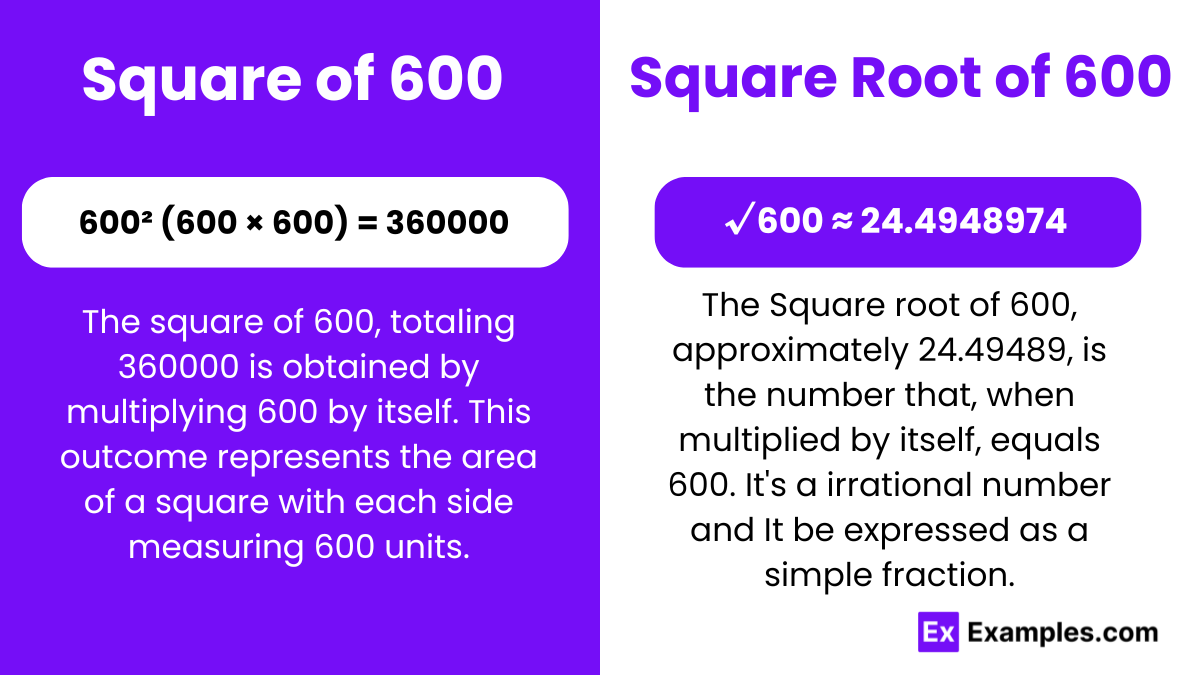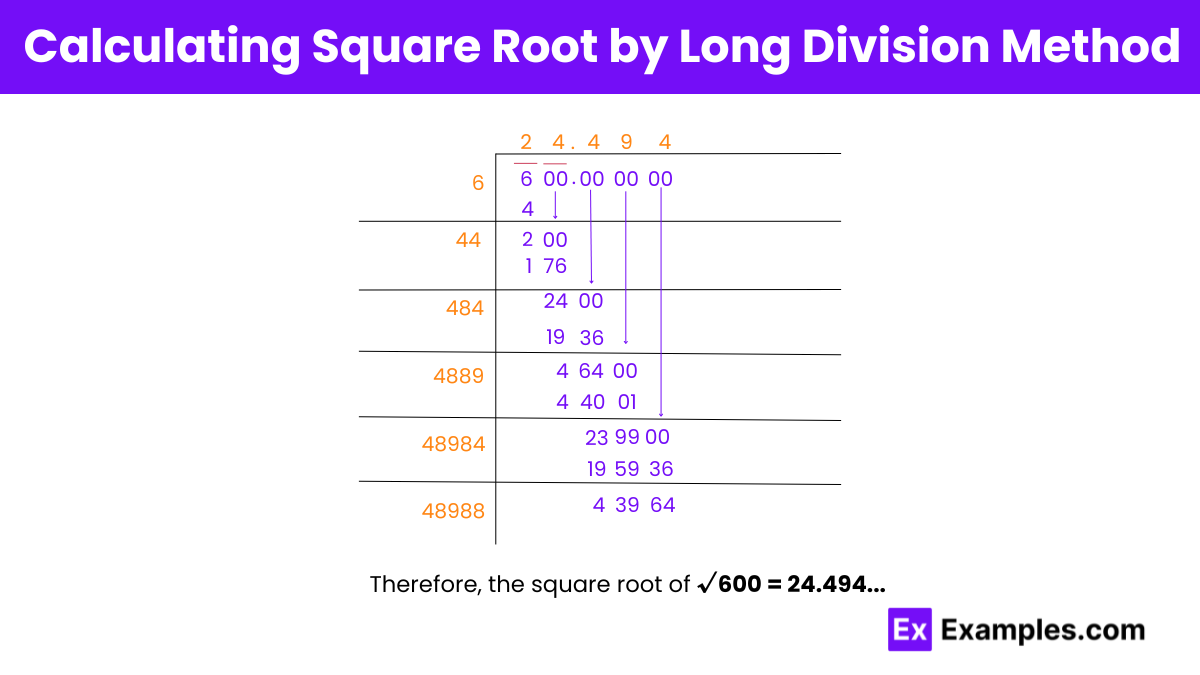What is the square of 600?
360000
120000
6000
300000


Within the domain of algebraic mathematics, squares and square roots hold significant importance. Squaring a number, such as 600, entails multiplying it by itself, yielding 360000. This foundational operation is vital for exploring rational and irrational numbers. A grasp of these fundamentals enriches understanding of mathematical relationships and patterns. Squares illuminate inherent number properties, while square roots unravel intricate numerical mysteries. These concepts serve as beacons, guiding mathematical explorations into fractional territories. Proficiency in squares and square roots equips mathematicians to navigate varied mathematical landscapes, unveiling the elegance and complexity inherent within algebraic frameworks.
The square of 600 equals 360,000, obtained by multiplying 600 by itself, a fundamental operation in algebraic mathematics, uncovering inherent number properties.
Or
√600 ≈ 24.494 Upto 3 decimals
The square root of 600 is approximately 24.495. This fundamental mathematical operation reveals the value that, when multiplied by itself, equals 600.
Exponential Form: 600^½ or 600^0.5
Radical Form: √600
Rational numbers are expressible as the quotient of two integers. Irrational numbers, however, cannot be represented as fractions of integers. Examples of irrational numbers include the square roots of non-perfect squares.

Step 1: Express 600 as 6 00.00 00. We take the number in pairs from the right. Take 6 as the dividend.
Step 2: Now find a quotient which is the same as the divisor. Multiply quotient and the divisor. (2 × 2 = 4) and subtract the result from 6 and get the remainder as 2.
Step 3: Bring down the pair of zeros. 200 is our new dividend.
Step 4: Now double the quotient obtained in step 2. Here it is (2 × 2 = 4). 40 becomes the new divisor.
Step 5: We need to choose a number such that (number + 40)× (number) gives a number ≤ 200. (40 + 4) × 4 = 176
Step 6: Subtract this from 200. Get the remainder as 24. Get the next pair of zeros down. 2400 is the new dividend.
Step 7: Now the quotient is 24. Double it. Here it is 48. 480 becomes the new divisor. Now find a (number + 480) × number) that gives ≤ 2400. We find that (484 × 4 = 1936). Get the remainder as 464.
Step 8: Repeat the process until we get the square root of 600 approximated to two decimal places. Thus, ( √600 ≈ 24.494 ).
A perfect square cannot be expressed as the square of an integer. Therefore, the square root of 600 is an irrational number.
The square root of 600 to the nearest whole number is 24, obtained by finding the integer value that, when squared, equals or is closest to 600.
Prime factorization breaks down 600 into its prime factors (2, 2, 2, 3, 5, 5), aiding in determining the exact square root or identifying if it’s irrational.
The square root of 600 is approximately 24.495. It’s irrational, non-integer, positive, and can be represented as a decimal or radical form.
Text prompt
Add Tone
10 Examples of Public speaking
20 Examples of Gas lighting
What is the square of 600?
360000
120000
6000
300000
Calculate the square root of 600.
24.49
25.49
26.49
27.49
Find the approximate value of the square root of 600.
22.5
23.5
24.5
25.5
If the square of a number is 360000, what is the number?
400
500
600
700
Which of the following is the square of 600?
36000
360000
3600000
60000
What is the result when 600 is squared?
300000
320000
340000
360000
The square root of which number is approximately 24.49?
576
600
625
650
Which of the following is closest to the square root of 600?
24
25
26
27
What is 600 multiplied by itself?
120000
240000
360000
480000
What number, when squared, equals 360000?
200
300
400
600
Before you leave, take our quick quiz to enhance your learning!

